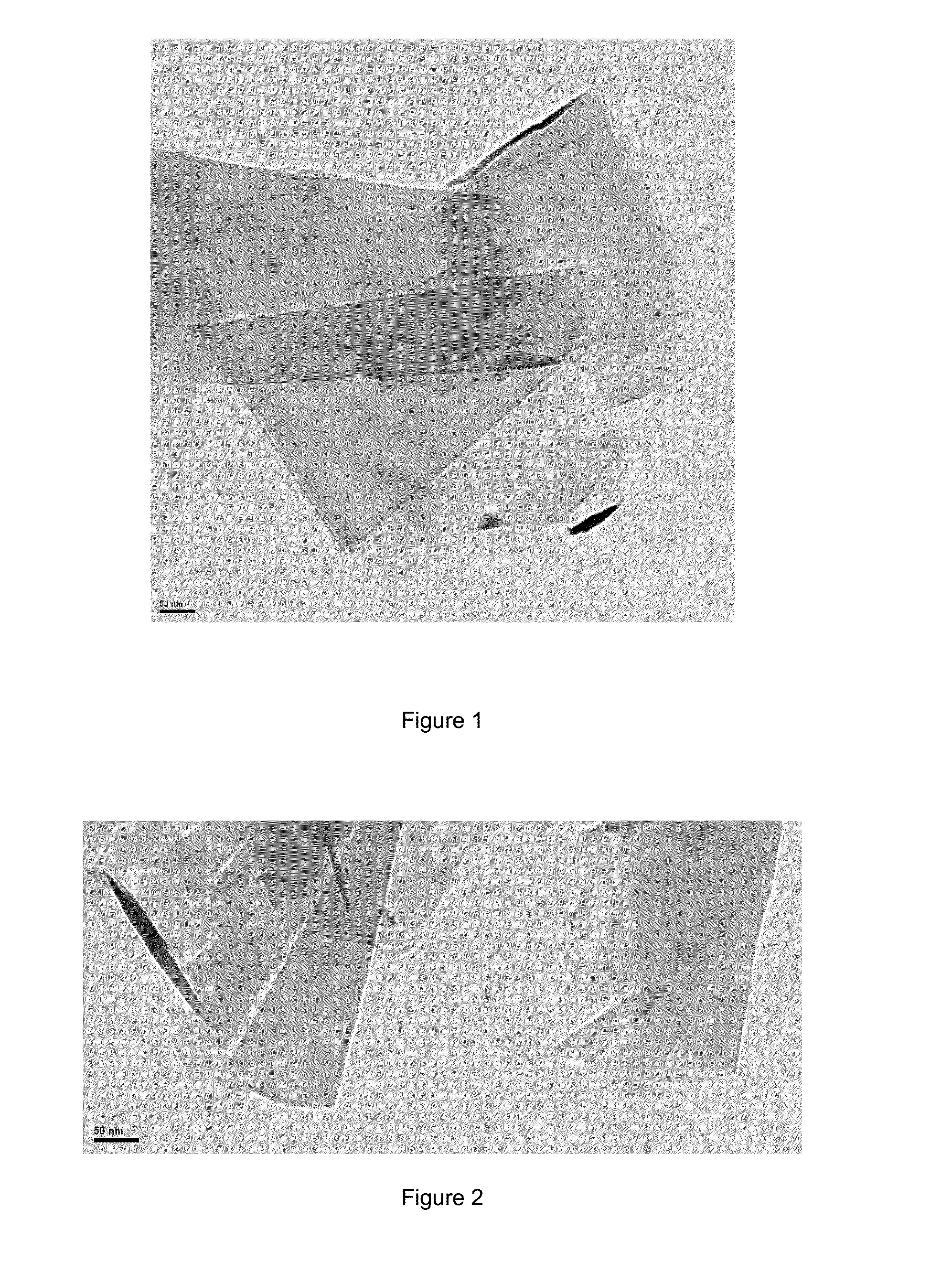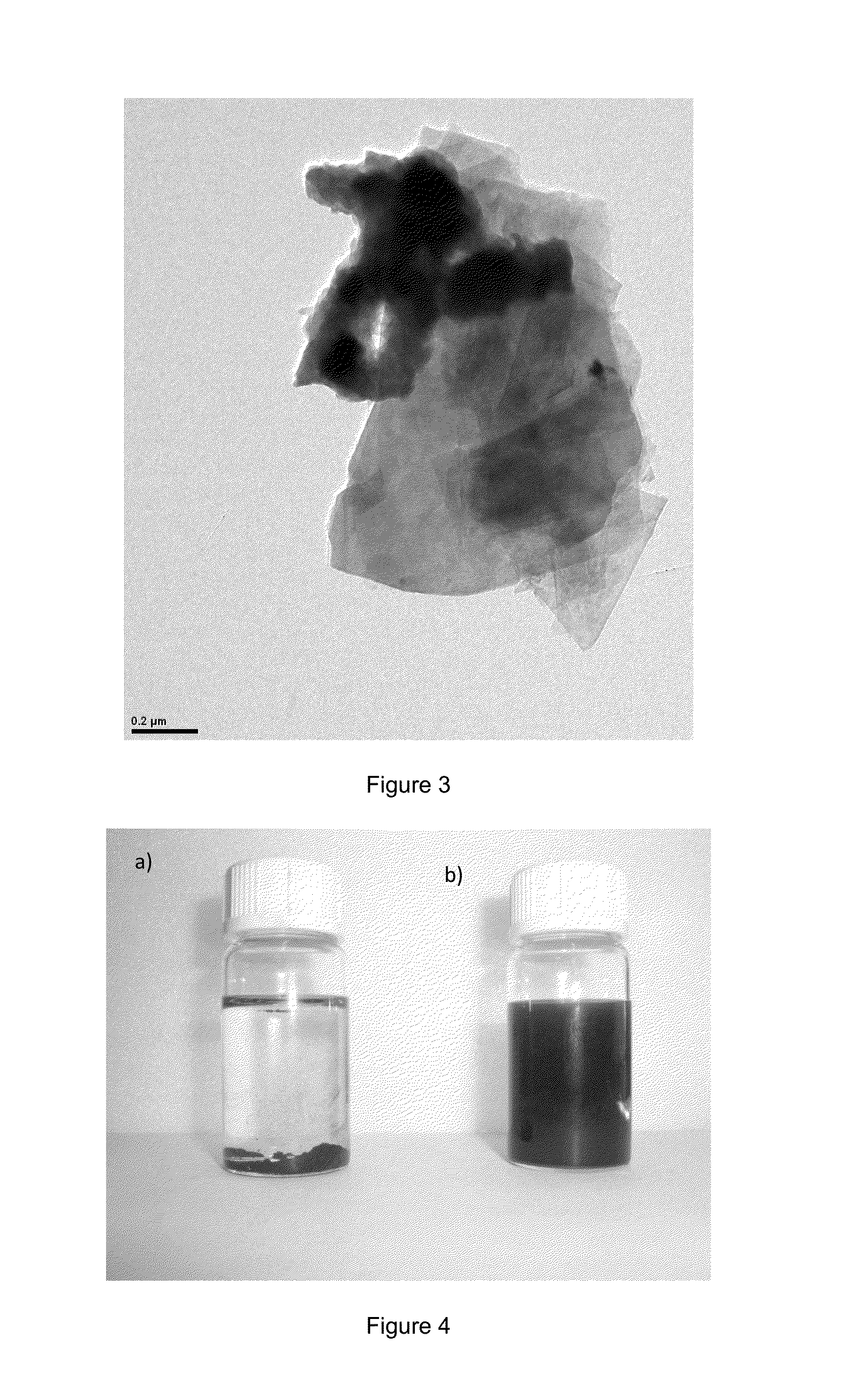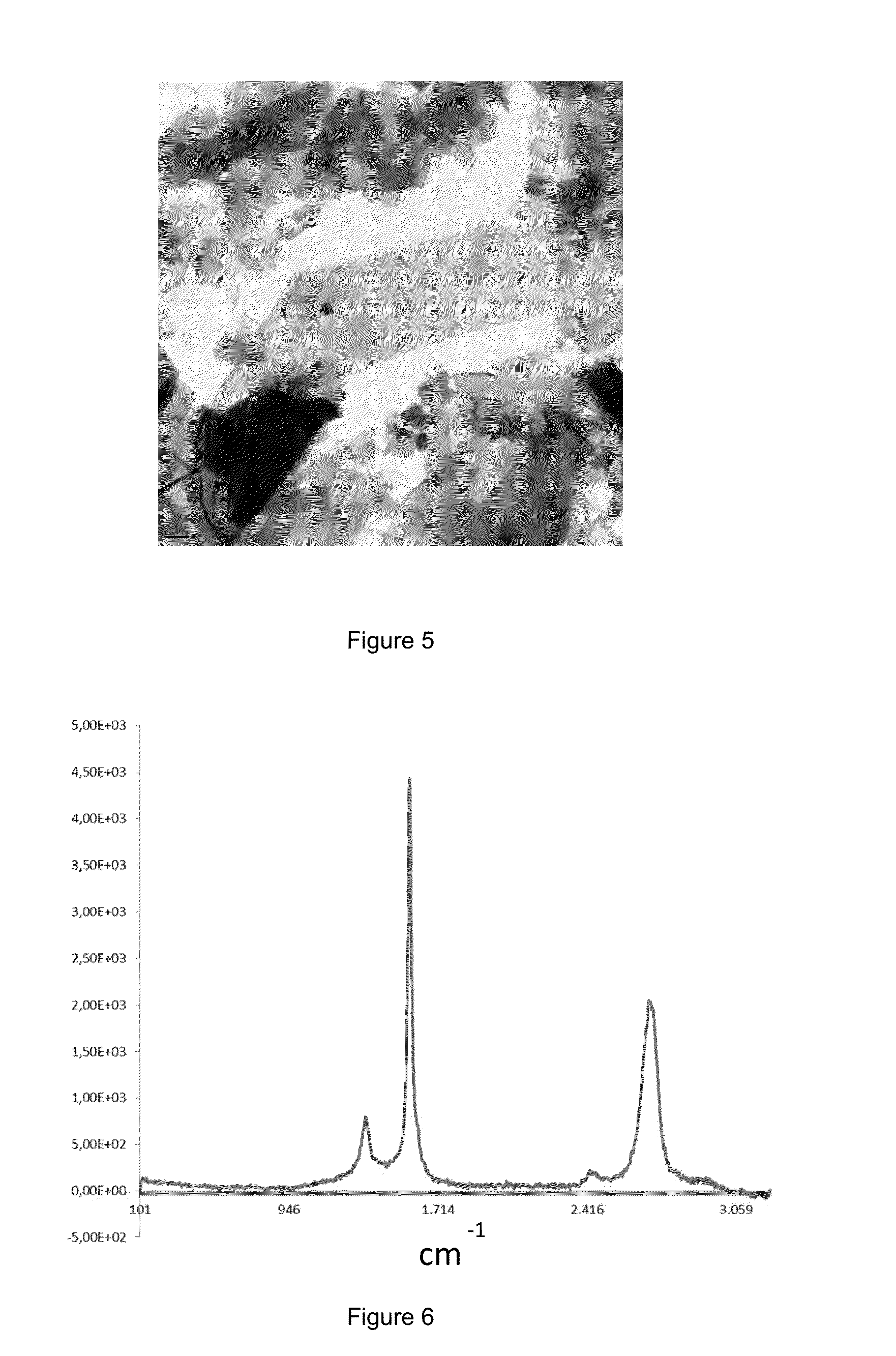Exfoliation of graphite with deep eutectic solvents
a technology of deep eutectic solvent and graphite, which is applied in the field of graphite materials, can solve the problems of inability to achieve high temperature and vacuum, inability to produce graphite, and inability to withstand high temperature and vacuum
- Summary
- Abstract
- Description
- Claims
- Application Information
AI Technical Summary
Benefits of technology
Problems solved by technology
Method used
Image
Examples
example 1
Exfoliation of Synthetic Graphite. Variant A
[0116]Graphite powder is added (synthetic, <20 microns, Sigma-Aldrich, 100 mg) to 9.900 g of a deep eutectic of solvent composed of a mixture of choline chloride and ethylene glycol in a molar ratio of 1:2. The mixture is sonicated for about three hours in an ultrasonic bath to give a homogeneous dark dispersion. 20 ml of absolute ethanol are added and the mixture is stirred for 20 minutes on a stir plate. The mixture is vacuum filtered through a nylon membrane (0.45 micron). The residue is washed with 20 ml of absolute ethanol and additional then dried in an oven at 60° C. for 12 hours. The resulting solid was redispersed in 100 ml ethanol and sonicated for 15 minutes after which it is centrifuged to separate the non-exfoliated graphitic material from graphene. 80 ml of the supernatant was taken, from which samples are prepared for analysis. A few drops of this suspension are added on a copper grid coated with carbon and observed by trans...
example 2
Exfoliation of Synthetic Graphite. Variant B
[0117]Graphite powder is added (synthetic, <20 microns, Sigma-Aldrich, 1.0 g) about 9.0 g of a deep eutectic solvent composed of a mixture of choline chloride and ethylene glycol in a molar ratio 1:2. The mixture is stirred on a stir plate (IK)\. Rot Basic) for about 16 hours to obtain a homogeneous dark dispersion. 40 ml of absolute ethanol are added and the mixture is stirred for 20 additional minutes. Then the mixture is vacuum filtered through a nylon membrane (0.45 microns). The residue is washed with 50 ml of absolute ethanol and then dried in an oven at 60° C. for 12 hours. The resulting solid was redispersed in 300 ml of DMF and sonicated for 15 minutes after which it is centrifuged to remove the non-exfoliated graphitic material from graphene. 250 ml of supernatant are taken and vacuum filtered through a nylon membrane (0.45 micron). The residue is washed with absolute ethanol (50 ml) and then dried in an oven at 60° C. for 12 hou...
example 3
Preparation of a Composite Polymeric Material of Polyaniline (PANI) / Exfoliated Graphite
[0118]5 mg of exfoliated graphite obtained by the process described in example 2 are added to 5 ml of a deep eutectic solvent composed of a mixture of ethylene glycol and choline chloride in a molar ratio 1:2. The mixture was sonicated for 15 minutes in an ultrasonic bath (sonicator). On the other hand, 45 mg of polyaniline (PANI, structure of emeraldin chloride), previously synthesized by polymerization at 0° C. of aniline in acid medium using ammonium persulfate as the oxidant with an oxidizing molar:monomer ratio of 4:1, are added to about 20 ml of a deep eutectic solvent composed of a mixture of choline chloride and ethylene chloride in a 1:2 molar ratio, and the mixture is sonicated until the complete dissolution of the polymer (about one hour) is observed, obtaining a solution of green color. Both dispersions are combined and the resulting mixture sonicated for one hour and subsequently stir...
PUM
| Property | Measurement | Unit |
|---|---|---|
| Fraction | aaaaa | aaaaa |
| Fraction | aaaaa | aaaaa |
| Angle | aaaaa | aaaaa |
Abstract
Description
Claims
Application Information
 Login to View More
Login to View More - R&D
- Intellectual Property
- Life Sciences
- Materials
- Tech Scout
- Unparalleled Data Quality
- Higher Quality Content
- 60% Fewer Hallucinations
Browse by: Latest US Patents, China's latest patents, Technical Efficacy Thesaurus, Application Domain, Technology Topic, Popular Technical Reports.
© 2025 PatSnap. All rights reserved.Legal|Privacy policy|Modern Slavery Act Transparency Statement|Sitemap|About US| Contact US: help@patsnap.com



